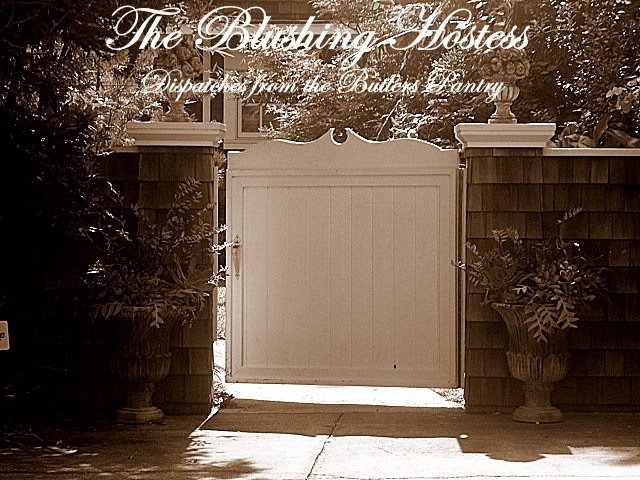Wisteria fears in Britain as reported by the Telegraph here remind me I have been meaning to research these cultivars because of a photo spread in Veranda from the August, 2008 issue, of Monet's Garden at Giverny, with particular focus on the Japanese bridge in wild bloom with lavender-hued pendant wisteria. What I have done with the issue in which it was featured is a great and controversial discussion in my addled mind but I must move on it nonetheless as this bug has me concerned. So, for your pleasure the bridge, another photo, also very nice:


It is perhaps the most famous wisteria-cloaked structure in the world (information on Claude Monet's work is indexed here), easily recognizable to anyone who has ever been in a cheesy poster shop or survived cursory art history work in high school. It captured my attention long ago and I have a small print of one of Monet's bridge works near my bed. I hesitate to tell you this because in design circles, these prints are perhaps the most over played record in the juke but, I love it, and I do not care who finds it tiresome. Now and then I contrive hazy plans to achieve a wisteria-covered arch not unlike this one.


I take issue with those yawn-inducing museum-standard issue benches, however. My intention is to spend time under the vines; sometimes with others but largely alone. Having others around would interrupt my work counting and tracing vines and excising my inner sheba. The benches lack an eye toward perfection and balance. And concrete is not the most welcoming lounge chair. On the whole, this is still no place I would linger with my champagne just a-tracing old world flower vines. It can be improved. That notion is in my head also as I drive myself into neurotic hypertension determining just which old deteriorating Southern home is best for us.
So this work, it is rather hard. And could take all day. I would lay in a gauzy dress under that canopy of resplendent magnificents whiling away steamy summer afternoons with a glass of brut intending to read but never really being able to tear my thoughts from following each vines' path across the pergola. Even in lives of great purpose this pursuit is no less important than many of others referred to as "downtime" and "relaxation" occupations (the concept of both being abhorrent and possibly the worst prescriptions for human kind, which I am certain thrives on work). And this work is certainly worth a perfected environment or it could become pure wisteria-scented drudgery.
Sound like madness? All this talk of cat-like laying about, champagne drinking (not sipping, never sipping), and tracing? Sure, it is madness, just like laying in the vast fields of my native home counting stars on a warm summer evening. Mad, if you are person who never stopped and took a good look around nor focused to hard on aesthetic tributes to beauty. I cannot imagine that world, but I knew it once. And if Monet knew it, he did his best to avoid it. That is, in fact, my grander scheme: More meetings of the Tuesday Afternoon Julep Society and assessment of long hot southern days and the flora which accompanies them fewer days spent discussing traffic conditions which only interests be in the sense that it keeps me from grander, purer pursuits such as this wisteria thing. 


Because these are my plans, I would like whatever plague has begun to strip Britain of magnificent wisteria to stay clear of my dreams and Monet's garden because I am still quite young and I have arches yet to conceive and gardens yet to visit, but in the meantime these are places from which to begin:



They will last approximately, forever, knocking over structures and overpowering villages and villagers if not properly cut back and pruned. Failing to do so will both wipe out large villas and cause bloom failure so one needs to pay careful attention to how to tame these luxuriant dense vines. After 400 years, I will likely be gone (or so my doctor insists I accept) but my wisteria will march on in moonlight and look, give or take, like this precious hand-me-down of a plant in Italy.


A wisteria is a hearty beast needing little water or fertilizer, basking in strong warming sun, and quickly making kindling of most flimsy pergolas and arches. When I build my arch, it will be construction grade and anchored in concrete or stone. Like so:


I will place where it will have both space and longevity: It will be no easy task for future generations to remove the plant were tastes to shift to other, less glorious, pergola guardians. When they note that she is an overpowering glory-hound and their inability to control or direct her, they make look skyward. I will smile upon them. Granny loves you, Chickens.





No comments:
Post a Comment